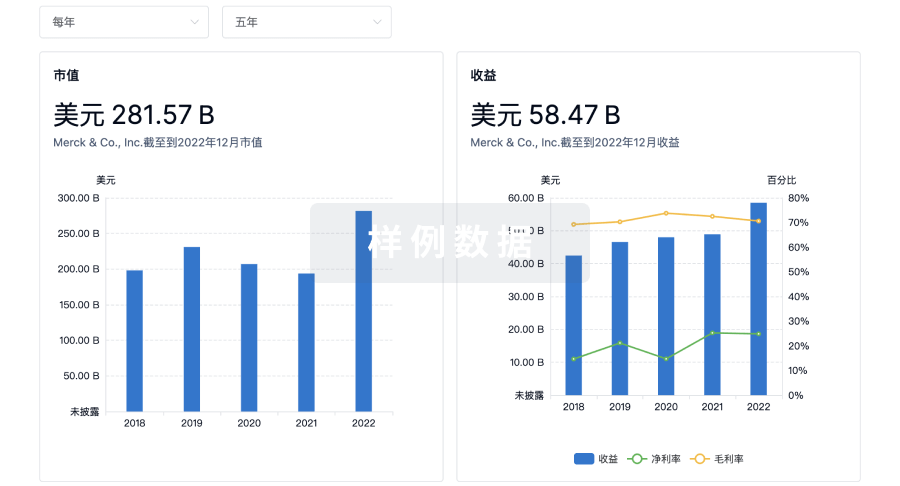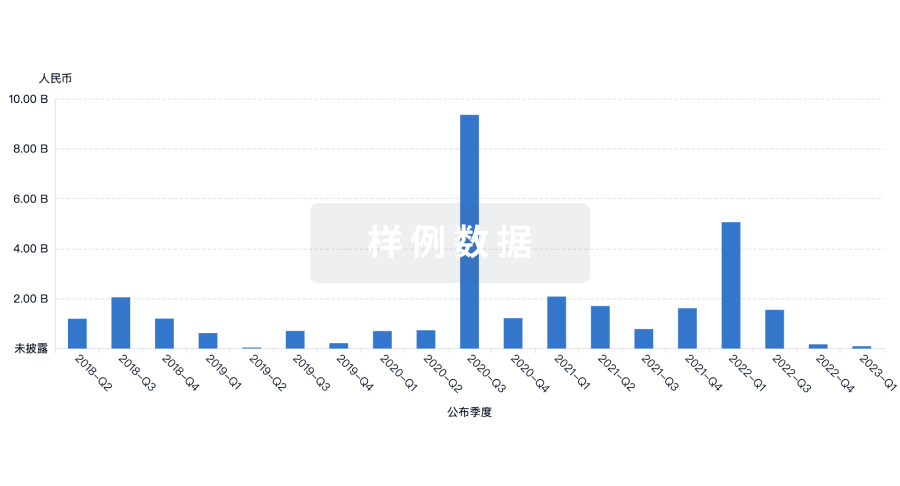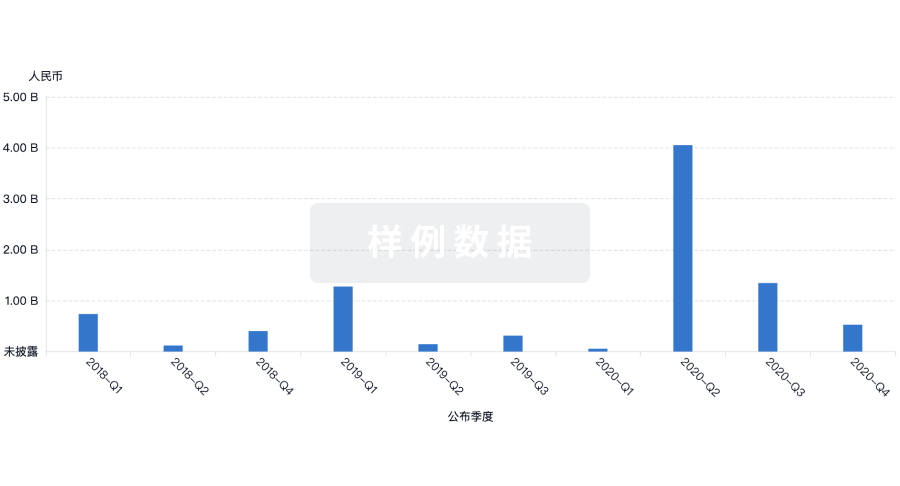预约演示
更新于:2025-12-06

FUJIFILM Holdings Corp.
更新于:2025-12-06
概览
标签
神经系统疾病
肿瘤
其他疾病
小分子化药
诊断用放射药物
疾病领域得分
一眼洞穿机构专注的疾病领域
暂无数据
技术平台
公司药物应用最多的技术
暂无数据
靶点
公司最常开发的靶点
暂无数据
| 排名前五的药物类型 | 数量 |
|---|---|
| 小分子化药 | 29 |
| 诱导性多能干细胞 | 3 |
| 间充质干细胞疗法 | 3 |
| 诊断用放射药物 | 2 |
| 单克隆抗体 | 2 |
关联
41
项与 FUJIFILM Holdings Corp. 相关的药物靶点- |
作用机制- |
在研适应症 |
非在研适应症- |
最高研发阶段批准上市 |
首次获批国家/地区 欧盟 [+3] |
首次获批日期2019-07-25 |
靶点 |
作用机制 SSTR2拮抗剂 |
在研机构 |
在研适应症 |
最高研发阶段批准上市 |
首次获批国家/地区 欧盟 [+3] |
首次获批日期2017-09-26 |
靶点 |
作用机制 RNA聚合酶抑制剂 |
在研机构 |
在研适应症 |
最高研发阶段批准上市 |
首次获批国家/地区 日本 |
首次获批日期2014-03-24 |
98
项与 FUJIFILM Holdings Corp. 相关的临床试验NCT06867731
Endosonographic Shear Wave Elastography to Assess Liver Fibrosis
The study is being done to collect information on the effectiveness of endosonographic elastography (a technique which uses sound waves) to measure the stiffness of the liver and spleen. Investigators are trying to determine if shear wave elastography is a good way to measure fibrosis instead of biopsy.
开始日期2025-01-30 |
申办/合作机构 |
JPRN-UMIN000055075
A systematic review of the antioxidant effects of Astaxanthin on blood lipids - A systematic review of the antioxidant effects of Astaxanthin on blood lipids
开始日期2024-07-26 |
申办/合作机构 |
JPRN-UMIN000055048
A systematic review of the skin moisturizing effects of Astaxanthin. - A systematic review of the skin moisturizing effects of Astaxanthin.
开始日期2024-07-24 |
申办/合作机构 |
100 项与 FUJIFILM Holdings Corp. 相关的临床结果
登录后查看更多信息
0 项与 FUJIFILM Holdings Corp. 相关的专利(医药)
登录后查看更多信息
1,324
项与 FUJIFILM Holdings Corp. 相关的文献(医药)2026-03-01·ULTRASONICS
Optimized Apodizations with Training Simulations (OATS): Learned depth-dependent apodizations via differentiable beamforming for reduced operator tuning
Article
作者: Nahas, Hassan ; Yu, Alfred C H ; Xiao, Di ; Kishimoto, Aya ; Hiroshima, Misaki
Ultrasound is a point-of-care imaging modality that allows for real-time operation. While real-time capabilities are advantageous, one potential concern is the operator dependency of the modality as settings selected by the operator can alter the image appearance. Improvement of the B-mode image to necessitate fewer adjustments can reduce the operator dependency. Here, we propose a supervised learning framework (Optimal Apodizations with Training Simulations - OATS) to devise new apodization weights for image quality improvement. Our framework relies on the use of a differentiable beamformer to iteratively optimize apodization weights by comparing differences between simulated ground truth images and the corresponding post-beamformed images (simulated training set of over 200 images). We experimentally verified that these apodization weights resulted in higher quality B-mode images on both simulated and real-world data for focused and unfocused imaging scenarios. In the focused imaging scenario, the OATS-apodized images demonstrated reduced sidelobe artifact, improved lateral resolution (11 %), and improved signal equalization across depth when compared to a conventional Hanning apodization. In the unfocused imaging scenario, we observed reduced sidelobe artifacts and improved tissue-to-lesion contrast by up to 13 dB when compared against fixed F-number beamforming. Additionally, the OATS apodization weights were physically interpretable and learned to emulate image formation parameters such as time-gain compensation, F-number limited aperture, and transmit focus through the supervised learning procedure. Overall, the proposed framework successfully learned generalizable receive apodizations to improve image quality.
2025-12-01·European Journal of Radiology Open
Deep-learning-based 3D content-based image retrieval system on chest HRCT: Performance assessment for interstitial lung diseases and usual interstitial pneumonia
Article
作者: Nei, Yuichiro ; Takaya, Hisashi ; Baba, Tomohisa ; Nakahama, Hiroshi ; Oosawa, Akira ; Ogura, Takashi ; Miyamoto, Atsushi ; Tamaoka, Meiyo ; Mitsumura, Takahiro ; Takahashi, Yui ; Tomiyama, Noriyuki ; Kurosaki, Atsuko ; Hanada, Shigeo ; Hori, Masatoshi ; Iwasawa, Tae ; Kishi, Kazuma ; Kido, Shoji
Background:
Diffuse parenchymal lung diseases have various conditions and CT imaging findings. Differentiating interstitial lung diseases (ILDs) and determining the presence or absence of usual interstitial pneumonia (UIP), can be challenging, even for experienced radiologists. To address this challenge, we developed a 3D-content-based image retrieval system (CBIR) and investigated its clinical usefulness.
Methods:
Using deep learning technology, we developed a prototype system that analyzes thin-slice whole lung HRCT images, automatically registers them in a database, and retrieves similar images. To evaluate search performance, we used a database of 2058 cases and assessed image similarity between query and retrieved cases using a 5-point visual score (5: Similar, 4: Somewhat similar, 3: Neither, 2: Somewhat dissimilar, 1: Dissimilar). To assess clinical usefulness, we evaluated the concordance of labels (ILD/non-ILD, with/without UIP) between query and retrieved cases, using a database of 301 cases across 57 diseases.
Results:
For search performance, the mean score of visual similarity between 70 queries and their top 5 retrieved cases was 4.37 ± 0.83. For clinical usefulness, label concordance between 25 queries and their top 5 retrieved cases was assessed across 4 labels. For ILD, the mean concordance of labels was 0.94 ± 0.15, while for non-ILD, it was 0.64 ± 0.31. For cases with UIP, the mean concordance of labels was 0.86 ± 0.17, while for cases without UIP, it was 0.83 ± 0.24.
Conclusions:
Our CBIR system showed high accuracy for identifying cases with/without UIP, suggesting its potential to support UIP differentiation in clinical practice.
2025-11-01·Japanese Journal of Radiology
Deep learning for appendicitis: development of a three-dimensional localization model on CT
Article
作者: Hiwatashi, Akio ; Hayashi, Kana ; Takaishi, Taku ; Kokubo, Yoshimasa ; Fujinaga, Takumi ; Yamamoto, Tatsuhito ; Ojio, Yoshinao ; Ito, Hirotaka ; Kawai, Tatsuya ; Owatari, Yusei
Abstract:
Purpose:
To develop and evaluate a deep learning model for detecting appendicitis on abdominal CT.
Materials and methods:
This retrospective single-center study included 567 CTs of appendicitis patients (330 males, age range 20–96) obtained between 2011 and 2020, randomly split into training (
n
= 517) and validation (
n
= 50) sets. The validation set was supplemented with 50 control CTs performed for acute abdomen. For a test dataset, 100 appendicitis CTs and 100 control CTs were consecutively collected from a separate period after 2021. Exclusion criteria included age < 20, perforation, unclear appendix, and appendix tumors. Appendicitis CTs were annotated with three-dimensional bounding boxes that encompassed inflamed appendices. CT protocols were unenhanced, 5-mm slice-thickness, 512 × 512 pixel matrix. The deep learning algorithm was based on faster region convolutional neural network (Faster R-CNN). Two board-certified radiologists visually graded model predictions on the test dataset using a 5-point Likert scale (0: no detection, 1: false, 2: poor, 3: fair, 4: good), with scores ≥ 3 considered true positives. Inter-rater agreement was assessed using weighted kappa statistics. The effects of intra-abdominal fat, periappendiceal fat-stranding, presence of appendicolith, and appendix diameter on the model’s recall were analyzed using binary logistic regression.
Results:
The model showed a precision of 0.66 (87/132), a recall of 0.87 (87/100), and a false-positive rate per patient of 0.23 (45/200). The inter-rater agreement for Likert scores of 2–4 was
κ
= 0.76. The logistic regression analysis showed that only intra-abdominal fat had a significant impact on the model’s precision (
p
= 0.02).
Conclusion:
We developed a model capable of detecting appendicitis on CT with a three-dimensional bounding box.
608
项与 FUJIFILM Holdings Corp. 相关的新闻(医药)2025-12-03
前言:近年来,通用型细胞治疗在全球范围内迎来爆发式进展。2025年11月,《柳叶刀》《Cell》等国际顶刊密集刊发中国突破——上海长海医院CD19 CAR-NK疗法以67%缓解率攻克红斑狼疮;而回溯2023至2024年,国际领域同样亮点纷呈:CRISPR Therapeutics的通用型CAR-T治愈镰状细胞贫血,诺华的现货型细胞疗法落地欧洲。这些跨越国界与时间的成果,标志着通用型细胞治疗已从技术探索迈入临床落地的关键阶段,为细胞治疗的普惠化奠定坚实的基础。
一、技术破局:从“定制化困境”到“通用化量产”的核心革新
传统自体细胞治疗依赖患者自身细胞制备,存在周期长(通常2-4周)、成本高(百万级费用)、质量不稳定等致命短板,仅10%的患者能获得治疗机会。通用型技术通过三大维度创新,实现了行业性突破:1. 细胞来源革新:构建“通用细胞库”
突破自体细胞局限,采用健康供者细胞、诱导多能干细胞(iPSC)或脐带血干细胞作为“原料”,从源头解决供给问题。上海长海医院的CAR-NK疗法选用健康人外周血NK细胞,经基因编辑后可批量制备;国内帕金森病治疗采用iPSC诱导分化的多巴胺神经前体细胞,这类细胞具有“无限增殖+定向分化”特性,能构建标准化“细胞工厂”。
国际上,美国福泰制药(Vertex)与CRISPR Therapeutics合作的CTX001,以健康供者造血干细胞为基础,通过基因编辑治疗镰状细胞贫血,2023年已获FDA批准上市。而瑞士诺华则建立了脐带血来源的通用细胞库,其开发的UCART19细胞药物,单批次可满足200名患者需求。中国医药生物技术协会数据显示,健康供者来源的通用细胞制备成功率达98%,远高于自体细胞的72%;日本京都大学的iPSC细胞库数据同样印证,标准化细胞来源的成功率比自体细胞提升30%以上。
2. 基因编辑护航:规避免疫排斥风险
异体细胞输注的核心难题是免疫排斥与移植物抗宿主病(GVHD)。当前主流技术通过基因编辑与抗体工程双重护航,实现安全应用。上海长海医院的CAR-NK药物通过敲除CD38基因与HLA-E修饰,使GVHD发生率降至0;驯鹿生物的BCMA CAR-T采用全人源抗体设计,将免疫原性降低60%,相关成果发表于《Cell》。
国际领域,2024年CRISPR Therapeutics的CTX001通过CRISPR-Cas9编辑BCL11A基因,不仅规避免疫排斥,还能激活胎儿血红蛋白表达,使镰状细胞贫血患者实现无输血生存;法国Cellectis公司的UCART123疗法,通过敲除TCRα链与CD52基因,在急性髓系白血病治疗中,GVHD发生率仅2.3%,远低于传统异体疗法的35%。此外,美国Janssen公司开发的“免疫伪装”技术,通过在细胞表面修饰PEG分子,使通用型细胞能“躲避免疫系统巡查”,该技术在2024年的ASCO大会上引发广泛关注。
驯鹿生物的BCMA CAR-TD的相关成果发布在《Cell》3. 生产工艺升级:实现“自动化量产”
自动化与规模化生产技术的成熟,为通用型细胞治疗的普惠奠定基础。国内合源生物最新投产的GMP车间,采用赛默飞Viosperre生物反应器,年产能达1万份通用型CAR-T产品,生产成本较自体疗法降低80%。
国际上,德国Miltenyi Biotec公司开发的CliniMACS Prodigy自动化系统,可将细胞制备流程从2周压缩至72小时,且全程无人干预,2024年已被全球50余家细胞治疗企业采用;美国Fujifilm Diosynth Biotechnologies则建立了模块化生产平台,单厂房年产能可达5万份通用型细胞产品,支持多款药物同时生产。
德国Miltenyi Biotec公司开发的CliniMACS Prodigy自动化系统
值得关注的是,2023年诺华在欧洲上线的“细胞银行”模式,将制备完成的通用型细胞冷冻储存于各地区医疗中心,患者确诊后48小时内即可完成输注,彻底解决了传统疗法“等待周期长”的痛点。二、临床落地:多疾病领域的突破性成果
从2023年CRISPR Therapeutics的细胞疗法获批,到2025年中国多项成果落地,通用型技术已突破血液肿瘤的传统边界,在自身免疫病、实体瘤、罕见病等领域形成“多点开花”格局,且疗效与安全性均达国际领先水平。这些成果跨越不同时间节点,覆盖全球多个研发中心,共同印证了通用型技术的普适性价值。1. 自身免疫病:从“终身服药”到“长期缓解”
系统性红斑狼疮、多发性硬化症等自身免疫病被称为“不死癌症”,传统治疗依赖激素压制免疫,副作用严重。上海长海医院赵东宝/高洁教授团队的CD19 CAR-NK疗法,使67%的红斑狼疮患者实现18个月无复发,成果被《柳叶刀》称为“范式革命”。2024年,美国Janssen公司的通用型CD22 CAR-T疗法在类风湿关节炎Ⅱ期试验中,使43%的患者实现ACR70应答(症状改善70%),且停药后缓解持续6个月以上;同期,中国医学科学院的通用型间充质干细胞疗法,在干燥综合征治疗中,通过调节唾液腺免疫微环境,使患者唾液分泌量提升50%,相关研究发表于《Annals of the Rheumatic Diseases》。更值得关注的是,这些疗法均规避了传统激素治疗导致的骨质疏松、感染等风险,2024年欧洲风湿病年会数据显示,通用型细胞疗法的严重不良反应发生率仅为3.2%,远低于生物制剂的15%。
2. 肿瘤治疗:实体瘤“免疫沙漠”的破冰者
通用型技术在实体瘤治疗中打破“免疫沙漠”困境,国内外突破频现。国内方面,上海细胞治疗集团的NAC-T技术使肺癌患者中位生存期翻倍;2024年,中国传奇生物的Claudin18.2靶向通用型CAR-T,在胃癌Ⅲ期试验中疾病控制率达86.7%,较自体疗法提升40%。
国际领域,美国MD安德森癌症中心的通用型GPC3 CAR-NK疗法,针对晚期肝癌实现29%的完全缓解率,相关成果发表于《Nature Medicine》;德国默克与BioNTech合作的mRNA修饰通用型CAR-T,通过在细胞内表达趋化因子,增强肿瘤浸润能力,使胰腺癌患者中位生存期从6.8个月延长至13.1个月。2025年SITC大会数据汇总显示,全球范围内通用型实体瘤疗法的临床研究数量较2023年增长120%,涵盖肺癌、胃癌、胰腺癌等11种高发肿瘤,其中6款疗法进入Ⅲ期阶段。
3. 神经退行性疾病:开启“细胞替代治疗”新路径
在神经退行性疾病与罕见病领域,通用型细胞疗法开启“细胞替代”新赛道。2025年国内首例iPSC来源细胞治疗帕金森病完成给药,患者运动功能改善40%;而日本京都大学在2023年已完成全球首例iPSC来源神经前体细胞治疗脊髓损伤,患者术后6个月恢复部分下肢运动功能。罕见病治疗中,2024年中国科学院的通用型造血干细胞疗法,在黏多糖贮积症Ⅰ型患者中实现酶活性永久恢复,替代了终身酶替代治疗;美国Bluebird Bio的通用型地中海贫血细胞疗法,使90%的患者摆脱定期输血依赖,2024年获欧盟EMA批准上市。
这些突破表明,通用型技术不仅适用于常见疾病,更在缺乏有效治疗手段的罕见病领域展现出独特价值,2025年全球已有19种罕见病的通用型治疗方案进入临床试验。二、行业重构:普惠化与全球化的双重价值释放
通用型技术的突破不仅是医学进步,更在重塑细胞治疗产业的生态逻辑,推动行业从“小众高端”向“大众普惠”转型。1. 价格亲民化:打破“天价医疗”壁垒
量产能力推动通用型疗法价格大幅下降,全球多地实现普惠化落地。国内博鳌乐城的EB病毒感染通用疗法仅1.6万元/次,上海长海医院CAR-NK疗法预计定价15-20万元/疗程;2024年药明巨诺的通用型CD19 CAR-T在国内获批,定价32万元,较自体CAR-T降低60%。
国际市场同样亲民,2023年获批的CTX001在美国定价约190万美元,但通过医保谈判后,患者自付部分可降至20万美元以内;日本2024年将通用型iPSC疗法纳入罕见病医保,患者最高报销90%,实际自付费用不足100万日元(约5万元人民币)。价格下降直接带动可及性提升,合源生物新药获批首月咨询量增长300%;美国FDA数据显示,CTX001上市1年内,镰状细胞贫血患者治疗覆盖率从自体疗法的5%提升至38%。2. 产业格局升级:中国从“跟跑”到“领跑”
全球通用型细胞治疗产业格局中,中国已从“跟跑”转向“并跑领跑”,国际竞争力持续提升。研发方面,全球32%的通用型临床试验由中国主导,上海长海医院、驯鹿生物等机构掌握核心专利超500项;2024年中国传奇生物的胃癌通用CAR-T获美国FDA突破性疗法认定,成为首个出海的实体瘤通用细胞疗法。
国际合作上,药明康德与德国拜耳共建全球通用细胞生产基地,年产能达3万份;恒瑞医药通过收购美国Treeline Bio,获得其靶向CD20的通用型CAR-NK技术平台。与此同时,欧美企业也在加速布局,2024年诺华以35亿美元收购通用细胞疗法公司Arcellx,强生豪掷10亿美元布局口服通用平台,形成全球竞争与合作并存的格局。合源生物2025年获批的纳基奥仑赛,作为中国首款全自主知识产权通用型CAR-T,更标志着我国产业进入“自主可控”时代。
3. 支付体系完善:政策与市场双轮驱动
全球多国已构建“政策+市场”的双轮驱动支付体系,加速通用型疗法落地。国内层面,国家卫健委将其纳入“十四五”生物经济重点领域,博鳌乐城开辟“优先审批”通道,2025年已有15款通用型疗法通过该通道快速落地;平安保险等推出的专项险,年缴399元可覆盖20万元治疗费用。
国际上,美国FDA为通用型疗法设立“再生医学先进疗法”(RMAT)资格,CTX001通过该通道实现6个月快速获批;欧盟2024年更新《先进治疗 medicinal products》法规,将通用型细胞疗法的审批周期缩短至120天;日本厚生劳动省则对通用型罕见病疗法实施“提前支付”政策,减轻企业研发资金压力。
医保方面,美国联邦医保已将CTX001纳入报销,欧盟计划2026年将通用型CAR-T纳入统一医保目录,我国医保部门也已启动相关定价测算。
图注:CTX001治疗原理三、挑战与展望:通用型技术的“下一程”
尽管进展显著,通用型细胞治疗仍面临长期安全性数据不足、部分实体瘤疗效待提升、伦理审查标准不统一等挑战。但行业发展趋势已明确,全球机构正聚焦三大方向突破:
多靶点联合疗法:中国医学科学院开发靶向CD19/CD22双特异性CAR-NK,针对复发性红斑狼疮疗效提升至78%;国际上,Vertex与CRISPR合作开发靶向BCL11A/CD34的双编辑细胞,增强镰状细胞贫血治疗的持久性;
口服剂型与递送革新:强生收购的Halda公司已开发口服纳米载体包裹通用型CAR-T技术,2025年进入Ⅰ期试验;瑞士罗氏则研发出“细胞贴片”技术,将通用型NK细胞固定于生物材料上,直接贴敷于肿瘤病灶,减少全身副作用;
个性化通用方案:中国科大团队结合AI算法,分析患者HLA分型与肿瘤基因突变特征,从通用细胞库中匹配最优细胞,使治疗应答率提升25%;美国23andMe与BioNTech合作,通过基因检测为患者定制通用细胞治疗方案,实现“标准化生产+个性化匹配”的平衡。
正如上海长海医院细胞治疗中心主任赵东宝所言:“通用型技术的终极目标,是让细胞治疗像抗生素一样,成为可及、可负担的基础医疗手段。”从CRISPR Therapeutics治愈镰状细胞贫血,到中国突破红斑狼疮与胃癌治疗瓶颈,全球创新力量正共同推动细胞治疗从“天价贵族医疗”走向“普惠大众疗法”。随着技术迭代与产业成熟,未来五年内,通用型细胞疗法有望覆盖更多疾病领域,为全球数亿难治性疾病患者点亮生命希望。
参考文献:
1. 赵东宝, 高洁, 等. CD19 CAR-NK细胞治疗复发难治性系统性红斑狼疮的单中心研究[J]. The Lancet, 2025, 398(10315): 2019-2031.
2. 中国新闻网. 中国专家最新研究:通用型细胞疗法为红斑狼疮患者带来新希望[EB/OL]. 2025-11-14.
3. 中国医药生物技术协会. 2025年中国细胞治疗产业发展白皮书[R]. 2025.
4. Frangoul H, Altshuler DL, et al. CRISPR-Cas9-edited hematopoietic stem cells in sickle cell disease[J]. New England Journal of Medicine, 2023, 389(13): 1185-1195.
5. 中国传奇生物. Claudin18.2靶向通用型CAR-T治疗胃癌Ⅲ期临床数据[EB/OL]. 2024-09-12.
6. FDA. Approval summary for exa-cel (CTX001)[EB/OL]. 2023-12-08.
登顶《柳叶刀》!中国 CAR-NK 疗法攻克红斑狼疮,67% 患者实现长期无复发
十年为始,医疗出海|联合生命十周年庆典暨答谢晚宴圆满落幕
最低5万!博鳌乐城第四批细胞治疗价格公布,细胞疗法迈入“亲民时代”
免疫疗法细胞疗法上市批准基因疗法
2025-11-26
·医药地理
引用全文
引用:刘 丽, 黄 静, 朱小雨, 等.艾拉莫德新合成工艺[J].中国医药工业杂志, 2025, 56(10): 1271-1276.
DOI :10.16522/j.cnki.cjph.2025.10.004
New Synthesis of Iguratimod
艾拉莫德新合成工艺
刘 丽1,黄 静1,朱小雨1,季婷婷1,王 陈2
(1. 安徽医学高等专科学校,安徽合肥 230601 ;2. 阜阳卫生学校,安徽阜阳 236069)
摘要
该文章报道了一种艾拉莫德(1) 的新合成工艺。首先,在三氯化铝作用下,起始原料3- 甲磺酰胺基-4- 苯氧基苯甲醚(2) 与乙酰氯反应,生成N-(4- 乙酰基-5- 羟基-2- 苯氧基苯基) 甲磺酰胺(3)。然后,3 与N,N- 二甲基甲酰胺二甲基缩醛/N- 溴代丁二酰亚胺经加成环合反应,得关键中间体N-(3- 溴-4- 氧代-6- 苯氧基-4H- 色烯-7- 基) 甲磺酰胺(19)。19 经氨水胺化得N-(3- 氨基-4- 氧代-6- 苯氧基-4H- 色烯-7- 基) 甲磺酰胺(7),最后7 经甲酰化得目标产物1。总收率由27.4%升至33.0% ( 以2 计),HPLC 纯度达99.9%。新合成路线较短,避免了使用易燃、易爆、有毒化学试剂,条件温和,副反应少,适合工业化生产。
关键词
艾拉莫德;抗风湿药;中间体;合成工艺
文章节选
艾拉莫德(iguratimod,1),化学名为N-[3-( 甲酰胺基)-4- 氧代-6- 苯氧基-4H- 色烯-7- 基] 甲磺酰胺。1 由日本Toyama Chemical 公司研发,于2003 年提交至日本监管部门申请上市,该申请于2009 年被撤回,2011 年与补充数据一起重新提交,并于2012 年在日本获批上市。截至目前,1 在欧盟、美国等主要市场暂未获批。1 作为新型抗慢性风湿类药物,临床上主要用于治疗类风湿关节炎,通过抑制炎性细胞因子、调节T 细胞数量以及抑制破骨细胞分化等机制,发挥抗炎、免疫调节、调节骨及软骨代谢等药理作用,从而改善类风湿关节炎患者晨僵、关节肿痛等症状。另外,1 还可用于其他自身免疫性疾病,如干燥综合征、强直性脊柱炎、骨关节炎、狼疮性肾炎等。与以往的抗风湿类药物( 如甲氨蝶呤、来氟米特) 相比,1 药效更好,且无论是单药治疗还是联合治疗,毒性更低。
扫描二维码阅读原文
基金项目:
2023 年度安徽省高校自然科学研究重点项目(2023AH052592)、2024 年度安徽省、高等学校省级质量工程项目(2024jyxm1306)
作者简介:
刘 丽,教授,从事新药研究与开发的工作。
关于转载:原创内容未经允许,不得转载
END
欢迎订阅
《中国医药工业杂志》
《中国医药工业杂志》是我国医药工业领域中办刊历史最长的医药期刊,是由上海医药工业研究院主管,上海医药工业研究院、中国药学会和中国化学制药工业协会主办的全国性综合医药学术刊物,国内外公开发行。自1970年11月创刊以来,《中国医药工业杂志》 始终以报道我国医药工业和科研中的成果和经验为宗旨,刊载了大量反映中国医药工业发展水平的论文和论著,积累了丰富的第一手原始资料;同时密切关注国际上制药技术的发展新动向,刊登有指导意义的综述和专论。期刊订阅详情请登录《中国医药工业杂志》官网(http://www.cjph.com.cn)了解。
《中国医药工业杂志》编辑部
2025-11-21
·医药健闻
注:各大公司财政年度的起始时间不同于自然年,因此会出现财政季度、年度等与自然年不一致的情况。各家公司可能会按照每季度、每半年的频率公布业绩情况。
强生(Johnson & Johnson)公布2025年第三季度业绩。季度销售额为239.93亿美元,上年同期为224.71亿美元,同比增长6.8%。季度净利润51.52亿美元,上年同期为26.94亿美元,同比增长91.2%。调整后的净利润68.01亿美元,上年同期为58.76亿美元,同比增长15.7%。其中,创新制药业务销售额155.63亿美元,同比增长6.8%。医疗器械业务销售额84.3亿美元,同比增长6.8%。
美敦力(Medtronic)公布截至2025年10月25日的第二财季业绩。季度净销售额84.03亿美元,上年同期为89.61亿美元。季度营业利润15.95亿美元,上年同期为16.86亿美元。季度归属公司的净利润12.7亿美元,上年同期为13.74亿美元。
雅培(Abbott)公布2025年第三季度业绩。季度净销售额113.69亿美元,上年同期为106.35亿美元,同比增加6.9%。季度营业利润20.57亿美元,上年同期为18.59亿美元,同比增长10.6%。季度净利润16.44亿美元,上年同期为16.46亿美元。其中,营养业务销售额21.53亿美元,诊断业务销售额22.53亿美元,制药业务销售额15.11亿美元,医疗设备业务销售额53.69亿美元。
西门子医疗(Siemens Healthineers)发布截至2025年9月30日的第四财季和财年业绩。第四财季营收63.22亿欧元(约73.25亿美元),上年同期为63.29亿欧元。季度调整后的EBIT利润10.98亿欧元,上年同期为11.2亿欧元,同比下降2%。季度净利润5.97亿欧元,上年同期为6.24亿欧元,同比下降4%。财年营收233.75亿欧元,上年为233.63亿欧元。财年调整后的EBIT利润38.55亿欧元,上年为35.1亿欧元。财年净利润21.68亿欧元,上年为19.59亿欧元。
史赛克(Stryker)公布2025年第三季度业绩。季度净销售额60.57亿美元,上年同期为54.94亿美元,同比增加10.3%。季度营业利润11.35亿美元,上年同期为10.85亿美元,同比增长4.6%。季度净利润8.59亿美元,上年同期为8.34亿美元,同比增长3%。
碧迪(BD)发布截至2025年9月30日的第四财季和财年业绩。第四财季营收为58.9亿美元,比上年同期的54.37亿美元增长8.3%。季度营业利润6.97亿美元,比上年同期的6.22亿美元增长11.9%。季度净利润4.93亿美元,比上年同期的4亿美元增长了23.4%。财年营收218.4亿美元,比上年的201.78亿美元增长8.2%。财年营业利润25.79亿美元,比上年的23.97亿美元增长7.6%。财年净利润16.78亿美元,比上年的17.05亿美元下降1.6%。
费森尤斯医疗(Fresenius Medical Care)公布2025年第三季度业绩。季度营收48.85亿欧元(约56.6亿美元),上年同期为47.6亿欧元,同比增长3%。营业利润4.77亿欧元,上年同期为4.63亿欧元,同比增长3%。净利润2.75亿欧元,上年同期为2.13亿欧元,同比增长29%。
GE医疗(GE HealthCare)公布2025年第三季度业绩。季度总营收51.43亿美元,上年同期为48.63亿美元。季度营业利润6.53亿美元,上年同期为6.76亿美元。季度归属公司的净利润4.46亿美元,上年同期为4.7亿美元。
波士顿科学(Boston Scientific)公布2025年第三季度业绩。季度净销售额50.65亿美元,上年同期为42.09亿美元。季度营业利润10.48亿美元,上年同期为7.33亿美元。季度归属公司普通股东的净利润7.55亿美元,上年同期为4.69亿美元。
飞利浦(Philips)公布2025年第三季度业绩。季度销售额43.02亿欧元(约49.84亿美元),上年同期为43.77亿欧元。营业利润3.3亿欧元,上年同期为3.37亿欧元。净利润1.87亿欧元,上年同期为1.81亿欧元。
赛默飞世尔(Thermo Fisher Scientific)公布2025年第三季度业绩。季度营收111.22亿美元,上年同期为105.98亿美元。季度营业利润19.41亿美元,上年同期为18.38亿美元。季度归属公司的净利润16.16亿美元,上年同期为16.3亿美元。其中,生命科学业务收入25.88亿美元,实验室产品和生物制药服务收入59.7亿美元,专业诊断业务收入11.4亿美元,分析仪器收入18.93亿美元。
丹纳赫(Danaher)公布2025年第三季度业绩。季度销售额60.53亿美元,上年同期为57.98亿美元。季度营业利润11.54亿美元,上年同期为9.58亿美元。季度净利润9.08亿美元,上年同期为8.18亿美元。
罗氏(Roche)公布2025年前九个月业绩。当期集团销售额458.62亿瑞士法郎。其中,制药业务销售额355.55亿瑞士法郎,诊断业务销售额103.07亿瑞士法郎。第三季度集团销售额149.18亿瑞士法郎,上年同期为151.36亿瑞士法郎。其中,制药业务销售额115.7亿瑞士法郎,上年同期为116.2亿瑞士法郎。诊断业务销售额33.48亿瑞士法郎(约42亿美元),上年同期为35.16亿瑞士法郎。
汉瑞祥(Henry Schein)公布2025年第三季度业绩。季度净销售额33.39亿美元,上年同期为31.74亿美元。季度营业利润1.64亿美元,上年同期为1.57亿美元。季度归属公司的净利润1.01亿美元,上年同期为9900万美元。
嘉德诺健康集团(Cardinal Health)公布截至2025年9月30日的第一财季业绩。财季营收640亿美元,营业利润6.68亿美元,归属公司的净利润4.5亿美元。其中,医疗产品和分销业务财季营收31.84亿美元,利润4600万美元。
百特国际(Baxter International)公布2025年第三季度业绩。季度净销售额28.35亿美元,上年同期为26.99亿美元,同比增加5%。季度营业利润1.72亿美元,上年同期为1.55亿美元,同比增长11%。季度归属公司股东的净亏损4600万美元,上年同期净利润1.4亿美元。
“达芬奇”手术机器人系统提供商直觉外科(Intuitive Surgical)公布2025年第三季度业绩。季度总营收25.05亿美元,上年同期为20.38亿美元。季度营业利润7.6亿美元,上年同期为5.77亿美元。季度归属公司的净利润7.04亿美元,上年同期为5.65亿美元。
舒万诺(Solventum)公布2025年第三季度业绩。季度净销售额20.96亿美元,上年同期为20.82亿美元。季度营业利润16.9亿美元,上年同期为2.75亿美元。季度净利润12.66亿美元,上年同期为1.22亿美元。
捷迈邦美(Zimmer Biomet Holdings)公布2025年第三季度业绩。季度净销售额20.01亿美元,上年同期为18.24亿美元。季度营业利润3.51亿美元,上年同期为2.8亿美元。季度归属公司的净利润2.31亿美元,上年同期为2.49亿美元。
泰尔茂(Terumo)公布截至2025年9月30日的上半财年业绩(4月-9月)。当期营收5349.3亿日元(约34.43亿美元),上年同期为5086.85亿日元,同比增长5.2%。营业利润1009.83亿日元,上年同期为877.16亿日元,同比增长15.1%。归属母公司所有者的净利润768.97亿日元,上年同期为632.04亿日元,同比增长21.7%。
富士胶片集团(Fujifilm Holdings)公布截至2025年9月30日的上半财年业绩(4月-9月)。当期营收15723.63亿日元,上年同期为15147.49亿日元,同比增长3.8%。营业利润1584.86亿日元,上年同期为1356.04亿日元,同比增长16.9%。归属公司的净利润1202.32亿日元,上年同期为1103亿日元。各事业领域,医疗健康业务收入4992亿日元(约32.13亿美元),同比增长3.1%。电子材料业务收入2095亿日元,同比增长1.9%。影像业务收入2915亿日元,同比增长13.3%。商业创新业务收入5722亿日元,同比增长0.8%。
奥林巴斯(OLYMPUS)公布截至2025年9月30日的上半财年业绩(4月-9月)。当期营收4543.5亿日元(约29.25亿美元),上年同期为4740.29亿日元。营业利润461.33亿日元,上年同期为705.3亿日元。归属母公司所有者的净利润291.87亿日元,上年同期为489.78亿日元。
迈瑞医疗发布2025年三季报。前三季度公司实现营业收入258.34亿元(约36.3亿美元),同比下降12.38%;归母净利润75.70亿元,同比下降28.83%。其中,第三季度公司实现营业收入90.91亿元(约12.8亿美元),同比增长1.53%;归母净利润25.01亿元,同比下降18.69%。
佳能集团(Canon)公布2025年第三季度业绩。季度净销售额11043.24亿日元,上年同期为10798.06亿日元。季度营业利润880.47亿日元,上年同期为981.64亿日元。季度归属公司的净利润636.67亿日元,上年同期为687.63亿日元。其中,印刷业务领域净销售额6039.86亿日元,医疗业务领域净销售额1328.67亿日元(约8.55亿美元),影像业务领域净销售额2536.09亿日元,工业业务领域净销售额853.69亿日元。
眼科
雷朋(Ray-Ban)品牌母公司眼镜行业巨头依视路陆逊梯卡(EssilorLuxottica)公布2025年第三季度业绩。集团季度总营收68.67亿欧元,上年同期为64.37亿欧元。其中,专业解决方案业务营收32.23亿欧元(约37.34亿美元),上年同期为30.17亿欧元。消费者业务营收36.44亿欧元,上年同期为34.2亿欧元。
爱尔康(Alcon)公布2025年第三季度业绩。季度净销售额25.89亿美元,上年同期为24.33亿美元。季度营业利润3.32亿美元,上年同期为3.32亿美元。季度归属公司股东的净利润2.37亿美元,上年同期为2.63亿美元。
博士伦(Bausch+Lomb)公布2025年第三季度业绩。季度营收12.81亿美元,上年同期为11.96亿美元。季度营业利润9500万美元,上年同期为4300万美元。季度归属公司的净亏损2800万美元,上年同期净利润400万美元。
联系美通社
+86-10-5953 9500
info@prnasia.com
100 项与 FUJIFILM Holdings Corp. 相关的药物交易
登录后查看更多信息
100 项与 FUJIFILM Holdings Corp. 相关的转化医学
登录后查看更多信息
组织架构
使用我们的机构树数据加速您的研究。
登录
或

管线布局
2025年12月13日管线快照
管线布局中药物为当前组织机构及其子机构作为药物机构进行统计,早期临床1期并入临床1期,临床1/2期并入临床2期,临床2/3期并入临床3期
药物发现
3
11
临床前
临床1期
3
3
临床2期
临床3期
2
18
批准上市
其他
21
登录后查看更多信息
当前项目
| 药物(靶点) | 适应症 | 全球最高研发状态 |
|---|---|---|
头孢氨苄 ( PBPs ) | 角膜炎 更多 | 批准上市 |
甲苯磺酸托氟沙星水合物 ( Bacterial DNA gyrase x Bacterial top IV ) | 角膜炎 更多 | 批准上市 |
甲磺酸加诺沙星 ( Bacterial DNA gyrase x Bacterial top IV ) | 呼吸道感染 更多 | 批准上市 |
吡罗昔康 ( COXs ) | 肌痛 更多 | 批准上市 |
头孢特仑新戊酯 ( PBPs ) | 细菌感染 更多 | 批准上市 |
登录后查看更多信息
药物交易
使用我们的药物交易数据加速您的研究。
登录
或

转化医学
使用我们的转化医学数据加速您的研究。
登录
或

营收
使用 Synapse 探索超过 36 万个组织的财务状况。
登录
或

科研基金(NIH)
访问超过 200 万项资助和基金信息,以提升您的研究之旅。
登录
或

投资
深入了解从初创企业到成熟企业的最新公司投资动态。
登录
或

融资
发掘融资趋势以验证和推进您的投资机会。
登录
或

生物医药百科问答
全新生物医药AI Agent 覆盖科研全链路,让突破性发现快人一步
立即开始免费试用!
智慧芽新药情报库是智慧芽专为生命科学人士构建的基于AI的创新药情报平台,助您全方位提升您的研发与决策效率。
立即开始数据试用!
智慧芽新药库数据也通过智慧芽数据服务平台,以API或者数据包形式对外开放,助您更加充分利用智慧芽新药情报信息。
生物序列数据库
生物药研发创新
免费使用
化学结构数据库
小分子化药研发创新
免费使用

